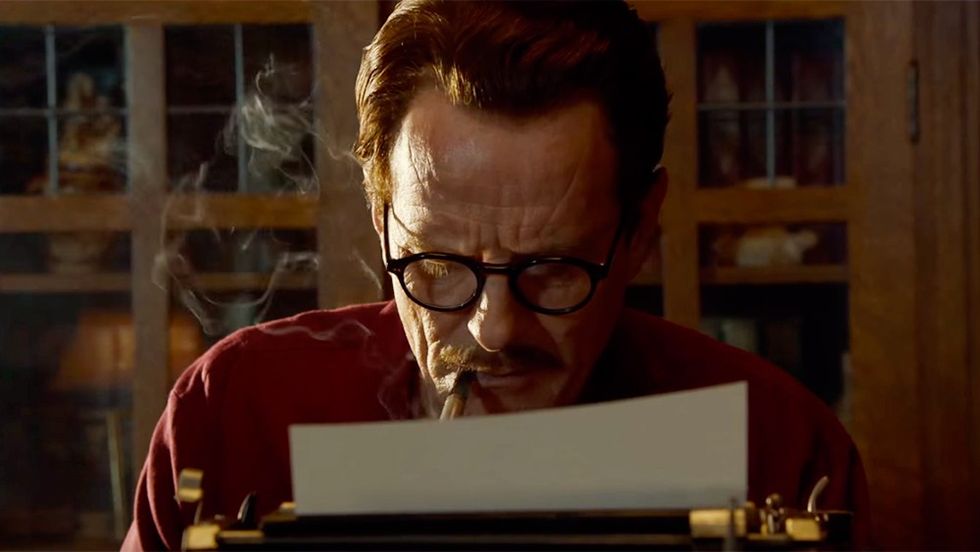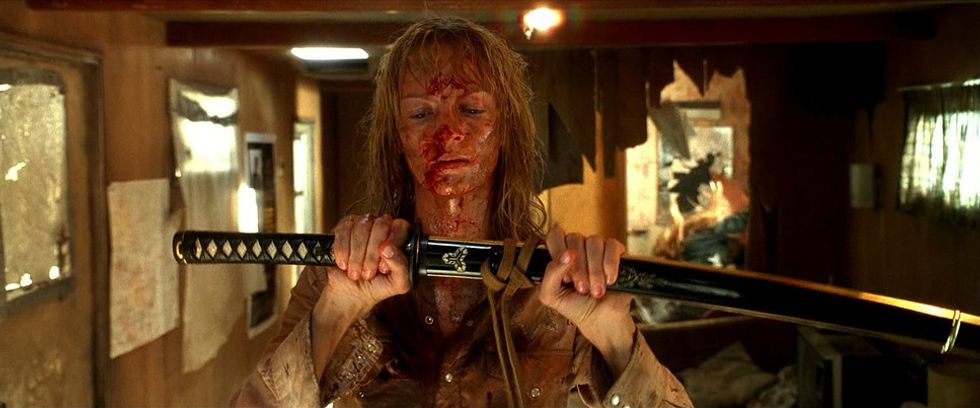What is a Leitmotif in Music and Screenwriting? (Definition and Examples)
Can you define a leitmotif in music? We're here to help.

Leitmotifs are a powerful tool in music, and it is a literary device that has been used for centuries to create a sense of unity and coherence in a piece of music or story and to help the listener or reader identify and follow the narrative or emotional arc of the composition.
The term originated in the works of composer Richard Wagner, who used leitmotifs extensively in his operas to represent different characters and concepts. Since then, leitmotifs have been used in various musical genres, including film scores, and where they are used to identify specific characters, themes, or moments in the movie.
And screenwriters use it to show character and to add emotion to a story.
In this article, we will explore the history and significance of leitmotifs in music, as well as some notable examples of their use in film scores. We'll also show them in screenwriting and examples in film and TV.
Ready? Let's go.

Leitmotif in Music Definition
A leitmotif (also spelled "leitmotiv") is a recurring theme or motif that is associated with a particular character, idea, or emotion in a piece of music. The term originated in the works of composer Richard Wagner, who used leitmotifs extensively in his operas to represent different characters and concepts.
A leitmotif can be a short melody, chord progression, or even a rhythm that is repeated throughout a composition, often with variations and modifications to reflect the changing emotions or actions of the character or idea it represents. This technique is used to create a sense of unity and coherence in a piece of music, and to help the listener identify and follow the narrative or emotional arc of the composition.
Leitmotifs are commonly used in film scores as well, where they are used to identify specific characters, themes, or moments in the movie. For example, the iconic "Imperial March" from Star Wars is a leitmotif that is associated with the villainous character Darth Vader.

Leitmotif in Screenwriting Definition
A leitmotif in screenwriting refers to a recurring theme or motif, such as a particular image, sound, or phrase, that is used throughout a film or television show to represent a particular character, idea, or emotion.
In other words, it is a repeated element that serves as a symbol or cue for the audience, connecting certain characters, scenes, or concepts in the story.
Leitmotifs can be visual, musical, or even linguistic in nature, and they are often used to create a sense of unity and coherence in a story, as well as to emphasize certain themes or emotions. For example, in the Star Wars franchise, the "Force" theme is a well-known leitmotif that is used to represent the power of the Jedi and the struggle between the light and dark sides of the Force.

Leitmotif Screenwriting Examples
Leitmotif is a literary term that refers to a recurring theme or motif in a literary work to describe the repetition of a particular image, symbol, phrase, or idea that is associated with a specific character, concept, or emotion.
Leitmotifs are used in screenwriting to create a sense of unity and coherence, as well as to emphasize certain themes or ideas. They can be visual, auditory, or even linguistic in nature, and they are often used to provide a deeper understanding of a character or a particular aspect of the story.
For example, in F. Scott Fitzgerald's novel "The Great Gatsby," the green light at the end of Daisy's dock is a leitmotif that represents Gatsby's longing for Daisy and his unattainable dream of achieving the American Dream. The color green is also associated with money and envy, further emphasizing the novel's themes of wealth, social status, and desire.
In William Shakespeare's play "Hamlet," the motif of madness is a leitmotif that is associated with several characters, including Hamlet himself. The motif is used to explore the theme of appearance vs. reality and the blurred line between sanity and insanity.
The "Shave and a Haircut" knock: This is a well-known leitmotif in many films and TV shows, often used as a way for characters to signal their presence or announce their arrival. The knock is usually followed by the response "two bits," and it has become a popular way to add a touch of humor or familiarity to a scene.
The Imperial March from Star Wars: This is one of the most recognizable leitmotifs in film history, representing the evil Galactic Empire and its leader, Darth Vader. The music is often used in scenes featuring Vader or the Empire, creating a sense of tension and danger.
The whistle from The Hunger Games: In the Hunger Games films, the mockingjay whistle is a leitmotif that represents hope and rebellion against the oppressive Capitol. The whistle is used by the main character, Katniss, and it becomes a rallying cry for the rebels fighting for freedom.
The color red in The Sixth Sense: In the movie The Sixth Sense, the color red is used as a leitmotif to represent danger and impending doom. The color is used in various ways throughout the film, such as the red balloon that appears before a character is about to die.
The "Dum Dum" sound from Law and Order: This is a leitmotif used in the Law and Order TV series to signal the end of a scene or the resolution of a case. The sound has become synonymous with the show and is often used in parodies or references to Law and Order.

Why Should I Care About Leitmotifs in Screenwriting?
Leitmotifs are recurring musical themes that are associated with specific characters, places, or ideas in a film or TV show. However, leitmotifs are not limited to just music; they can also be visual or even verbal cues that are associated with certain characters or themes.
As a screenwriter, incorporating leitmotifs into your writing can add depth and meaning to your story. Here are a few reasons why you should care about leitmotifs in screenwriting:
Emphasize key themes: By associating a specific piece of music or visual cue with a particular theme in your story, you can reinforce that theme and help it resonate with your audience.
Create emotional connections: Leitmotifs can help your audience form emotional connections with your characters by associating them with specific pieces of music or visual cues.
Enhance character development: Using leitmotifs to represent your characters can help you develop them more fully, as you explore the associations and connections that are suggested by their themes.
Improve storytelling: Incorporating leitmotifs into your storytelling can help you create a more cohesive and satisfying narrative, as you use the recurring themes to tie together different elements of your story.

Why Are Letimotifs Used in Film and TV Music?
Leitmotifs are a powerful tool that can enhance the emotional impact and storytelling of a film or TV show, helping to create a more immersive and engaging experience for the viewer. Here are some ways composers use them:
Characterization: Leitmotifs can be used to associate a particular musical theme with a specific character, helping to establish their identity and personality in the minds of the audience. This technique can be especially useful in complex stories with many characters.
Emotional resonance: Leitmotifs can evoke a particular emotion or mood in the audience, whether it's a sense of danger, mystery, or triumph. By repeating a musical theme throughout a film or TV show, the composer can help to reinforce the emotional tone of the story and create a stronger connection with the viewer.
Narrative structure: Leitmotifs can be used to create a sense of continuity and structure in a film or TV show, helping to tie different scenes and storylines together. By using the same musical theme in different contexts throughout the story, the composer can create a sense of unity and coherence that helps the audience follow the narrative arc.

Why Should I Care About Leitmotifs in Music?
Caring about leitmotifs can help us to engage more deeply with the stories and music we encounter in film and TV, and gain a greater appreciation for the artistry and cultural significance of these mediums.
Enhanced storytelling: Leitmotifs can help to create a more immersive and engaging experience for the viewer by enhancing the emotional impact and narrative structure of a film or TV show. By associating particular musical themes with specific characters, emotions, or storylines, leitmotifs can help to reinforce the themes and motifs of the story and create a stronger connection with the audience.
Appreciation of music: By paying attention to leitmotifs, we can gain a deeper appreciation for the role that music plays in film and TV. Understanding how composers use leitmotifs to create emotional resonance and narrative structure can help us to appreciate the artistry and creativity that goes into film and TV production.
Cultural significance: Leitmotifs have been used in music and storytelling for centuries and are an important part of many cultural traditions, from classical opera to contemporary film scores. By studying leitmotifs, we can gain a greater appreciation for the cultural significance of music and storytelling and their role in shaping our understanding of the world around us.

Leitmotif Examples in TV Music
Leitmotifs are not only used in music and film, but they are also commonly used in television shows. Here are a few examples of notable leitmotifs in TV:
Game of Thrones - The main theme of the show is a leitmotif that is played throughout the series, representing the epic and grandiose nature of the story.
The Walking Dead- The theme "The Pulse" is a leitmotif used in the show's soundtrack to represent the sense of danger and tension that permeates the world of the show.
Sherlock - The theme "Sherlock's Theme" is a leitmotif that is played whenever the titular character is doing detective work or solving a case, representing his sharp intellect and deductive abilities.
The Simpsons - Each of the main characters in the show has their own leitmotif that is played whenever they appear on screen, such as Homer's "Simpson's Theme" or Lisa's "Lisa's Sax."
Stranger Things - The theme "Main Title" is a leitmotif that is played at the beginning of each episode, representing the show's 1980s setting and supernatural themes.

Leitmotif Examples in Film
Leitmotifs are frequently used in film to help establish character, theme, or mood. Here are some examples of notable leitmotifs in film:
Star Wars- One of the most famous examples of leitmotifs in the film is the "Force Theme" from the Star Wars movies, which is associated with the Jedi and the power of the Force.
The Godfather - The theme "The Godfather Waltz" is a leitmotif that is associated with the character of Vito Corleone, representing his power and influence over his criminal empire.
The Lord of the Rings- The theme "Concerning Hobbits" is a leitmotif that is associated with the hobbits and the Shire, representing their simple and idyllic way of life.
Jaws - The theme "Main Title" is a leitmotif that is associated with the shark in the movie Jaws, representing its menacing and terrifying presence.
Harry Potter - The theme "Hedwig's Theme" is a leitmotif that is associated with the character of Harry Potter and is played throughout the movie series, representing the wonder and magic of the wizarding world.

Summing Up What is a Leitmotif in Film and TV
Leitmotifs in music are a fascinating and powerful technique that has stood the test of time and continued to captivate audiences for centuries.
Writers and composers have used them to create amazing sounds, visuals, and storytelling moments.
By associating specific melodies, harmonies, or rhythms with particular characters or emotions, composers can create a sense of unity and emotional resonance that can elevate a piece of music to new heights.
And using specific visuals or colors can help production designers and directors enhance the look and feel of the project.
Whether it's in the operas of Richard Wagner, the film scores of John Williams, or the works of countless other composers, leitmotifs have played an integral role in the art of music composition.
We hope this article has given you a deeper appreciation for this technique and inspired you to explore the world of music with fresh ears and a newfound appreciation for the power of melody and storytelling.
Let me know what you think in the comments.














